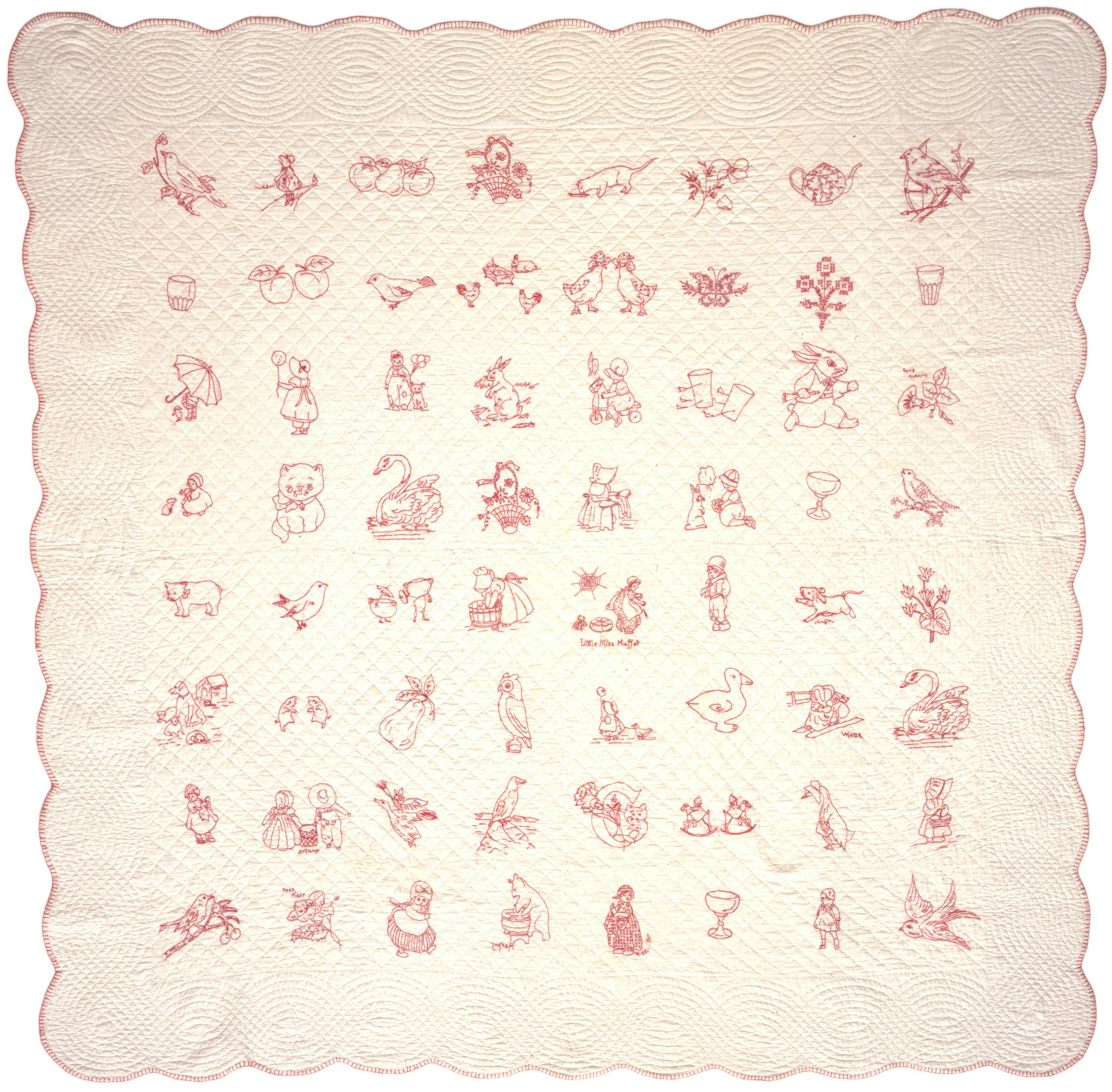Collections by Name | Collections by Region
Deborah Harding Redwork Collection
Deborah Harding, author of America's Glorious Quilts and former Crafts and Needlework editor at Family Circle, began her exploration of redwork as a means to satisfy her curiosity about a redwork quilt she purchased at a flea market. As she began to explore the quilt's origins, Deborah discovered nursery rhyme motifs of "Mary, Mary Quite Contrary" and "Who Killed Cock Robin?" within the stitching, along with Beatrix Potter characters including Peter Rabbit, Jemima Puddleduck, and Flopsy, Mopsy, and Cotton-tail. She called the quilt "Mary, Mary Quite Contrary" because of its imagery. Deborah's subsequent collection of textiles and research materials on redwork culminated in the publication of Red & White: American Redwork Quilts and Patterns (New York: Rizzoli International Publications, Inc., 2000).
Redwork quilts became popular between 1885 and 1925 and are currently enjoying a revival at the turn of the 21st century. They consisted of outline-embroidered images, usually square, and were stitched with colorfast Turkey red cotton floss onto muslin squares or household linens. Embroidery motifs were marketed for quilt blocks, but also for other home linens such as pillowcases, tidies, and splashers. Designs included Japanese inspired images, Kate Greenaway children, animals, nursery rhymes, floral designs, commemorative images and more.
Redwork began to emerge following the 1876 Centennial Exposition in Philadelphia. The Royal School of Art Needlework at Kensington produced one of the exhibits at this World's Fair. American women were intrigued with the ornamental embroidery and it replaced previous styles of needlework in popularity. This trend became known as art needlework to separate it from plain sewing. Woman began decorating all sorts of objects with embroidery as a means of adding beauty and serving as an artistic expression. Household objects of all sorts were embellished. The origins of redwork are closely related to crazy quilting, which also emerged from the Centennial Exposition and shared many of the same influences.
Women's magazines such as The Ladies' Home Journal and Godey's Lady's Book and Magazine began publishing patterns and offers for patterns in the 1880's. Often, the patterns were premiums for subscriptions. Numerous catalogues of designs competed for the stitcher's attention. Pre-stamped linens were also available. Women would often combine designs from multiple sources to create their quilts.
The Deborah Harding Collection at the Michigan State University Museum/Great Lakes Quilt Center consists of twelve redwork quilts, embroidered pieces, research, and related ephemera. All of the quilts in the collection were featured in Harding's book and include "Mikado Quilt," "Nursery Rhyme Quilt," "Holy Bible Coverlet," and "Mary, Mary Quite Contrary." Among the other embroidered pieces are splashers, chairbacks, laundry bags, and a child's doily. The numerous files of Harding's original accompanying research add to the collection's richness.
Exhibitions
"Redwork: A Textile Tradition in America." Michigan State University Museum, 2008.

Little Miss Muffet, unknown maker, possibly made in Pennsylvania, c. 1921-1923





